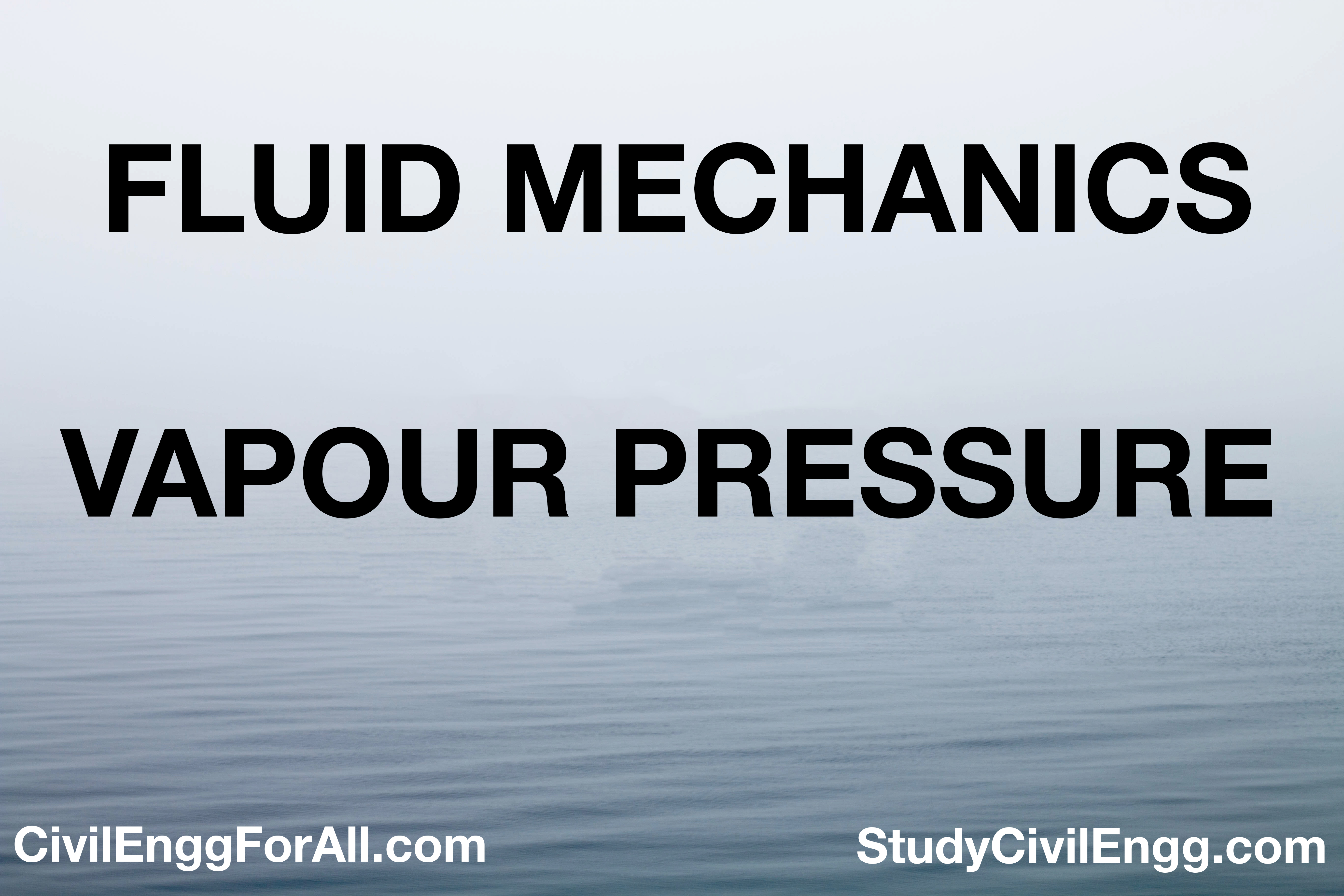VAPOUR PRESSURE - FLUID MECHANICS (StudyCivilEngg.com)
VAPOUR PRESSURE
SUBJECT : FLUID MECHANICS
All liquids possess a tendency to evaporate or vaporize i.e., to change from the liquid to the gaseous state. Such vaporization occurs because of continuous escaping of the molecules through the free liquid surface. When the liquid is confined in a closed vessel, the ejected vapour molecules get accumulated in the space between the free liquid surface and the top of the vessel. This accumulated vapour of the liquid exerts a partial pressure on the liquid surface which is known as vapour pressure of the liquid.
As molecular activity increases with temperature, vapour pressure of the liquid also increases with temperature. If the external absolute pressure imposed on the liquid is reduced by some means to such an extent that it becomes equal to or less than the vapour pressure of the liquid, the boiling of the liquid starts, whatever be the temperature. Thus a liquid may boil even at ordinary temperature if the pressure above the liquid surface is reduced so as to be equal to or less than the vapour pressure of the liquid at that temperature.
If in any flow system the pressure at any point in the liquid approaches the vapour pressure, vaporization of liquid starts, resulting in the pockets of dissolved gases and vapours. The bubbles of vapour thus formed are carried by the flowing liquid into a region of high pressure where they collapse, giving rise to high impact pressure. The pressure developed by the collapsing bubbles is so high that the material from the adjoining boundaries gets eroded and cavities are formed on them. This phenomenon is known as cavitation. Mercury has a very low vapour pressure and hence it is an excellent fluid to be used in a barometer. On the contrary various volatile liquids like benzene etc., have high vapour pressure.
FAQs COVERED IN THIS POST
What is Vapour Pressure?
What is the effect of molecular activity on Vapour pressure?
What is vaporization of liquid?





Post a Comment